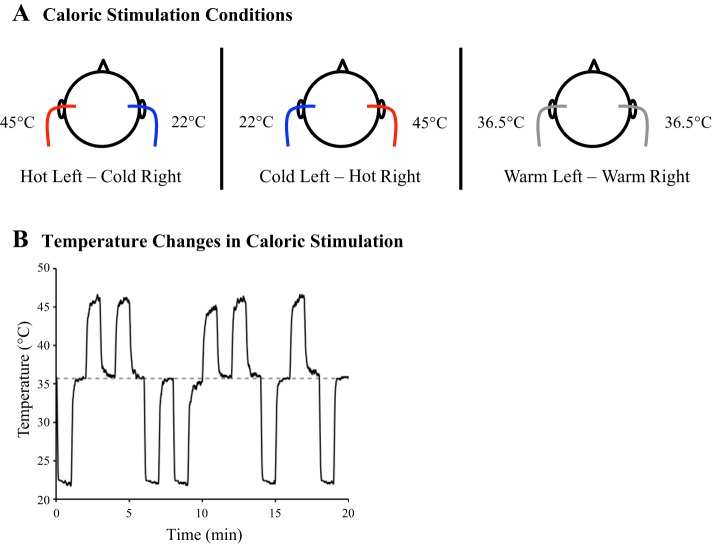Fig. 1.
Design of caloric vestibular stimulation. A: caloric stimulation conditions (circle = schematic participant head in bird's eye view). Bithermic caloric stimulation was performed with hot (∼45°C) in the left ear and cold (∼22°C) in the right ear (left) or cold in the left ear and hot in the right ear (middle), in different trials. Each trial with caloric stimulation was followed by a baseline trial with warm (∼36.5°C) in both ears (right). B: temperature changes in the ear canal during caloric stimulation, as measured in one ear of a sample participant outside the MRI-scanner. One run of caloric stimulation was performed (20 min), with 60-s long blocks of caloric stimulation (hot in one ear and cold in the other) alternating with 60-s long baseline blocks (warm in both ears). There were 5 trials with hot left and cold right and 5 trials with temperatures presented vice versa, in random order but always followed by a baseline trial. Please note that temperature changes were only measured in 1 ear. Dashed line = average body temperature in the outer ear of 5 sample participants, measured outside the scanner before the vestibular experiment. Baseline temperatures for caloric stimulation were chosen to match the average body temperature in the ear canals.

